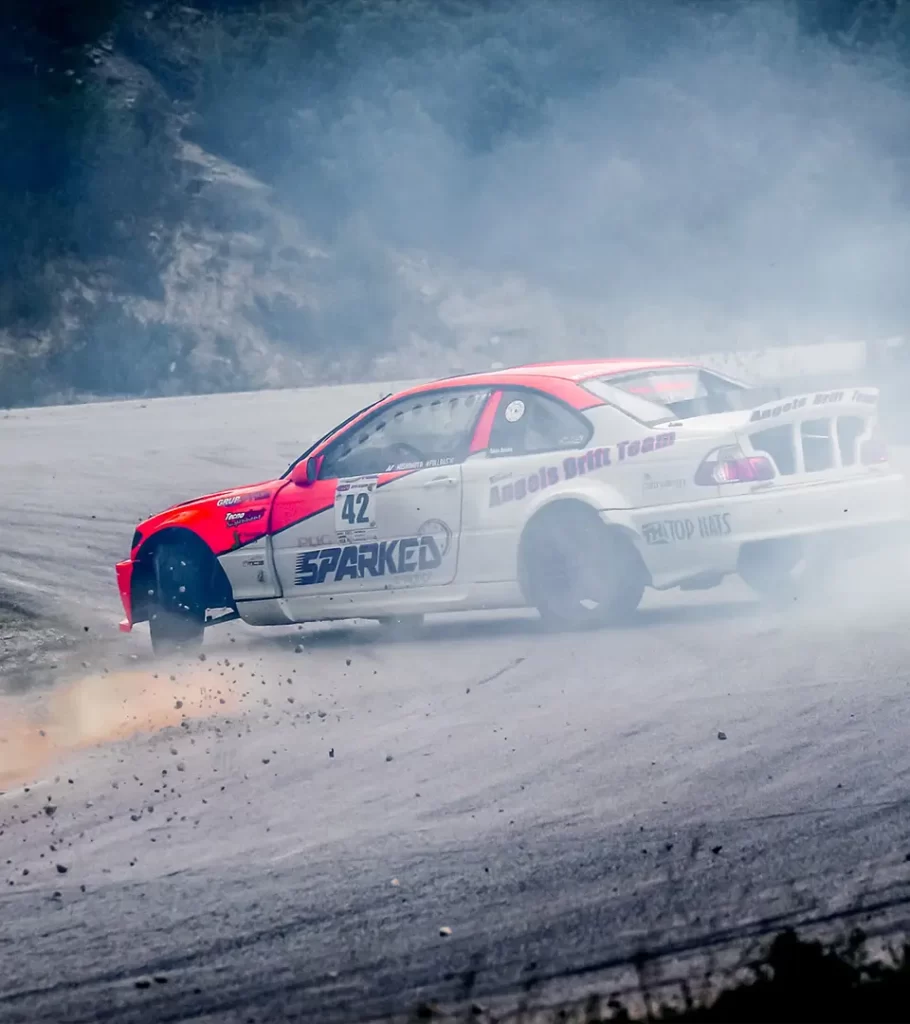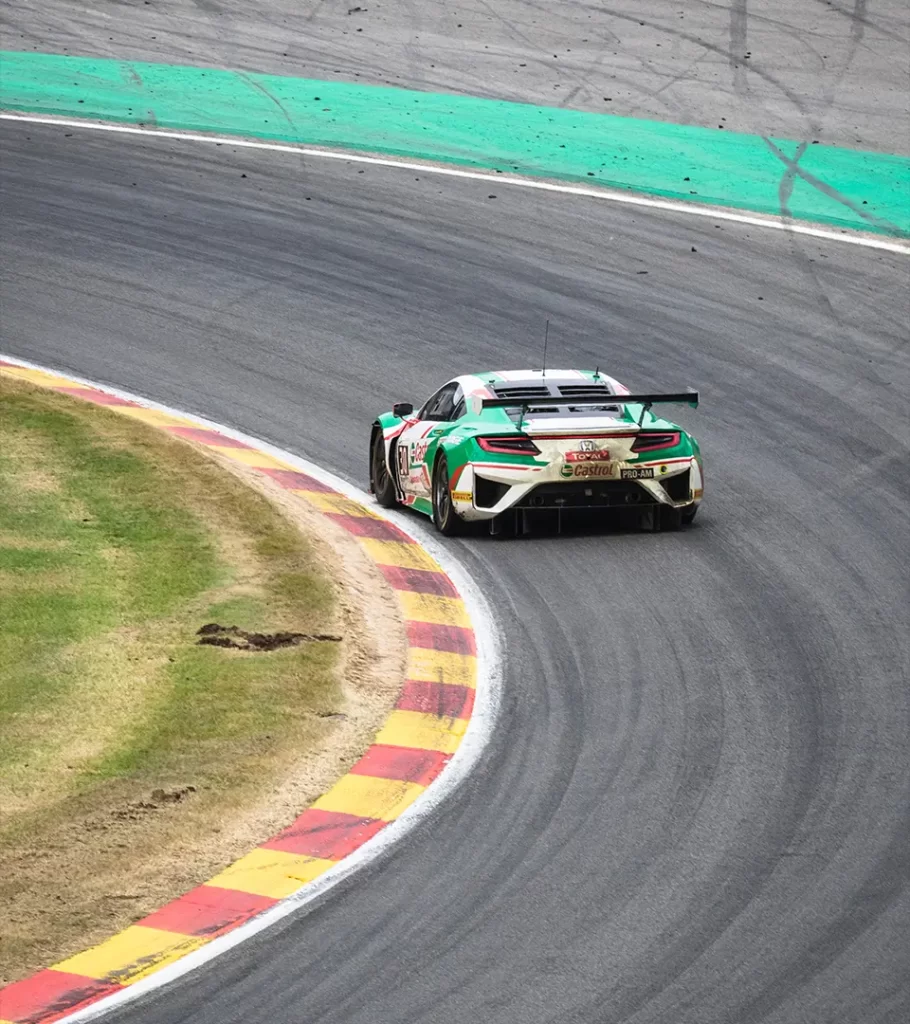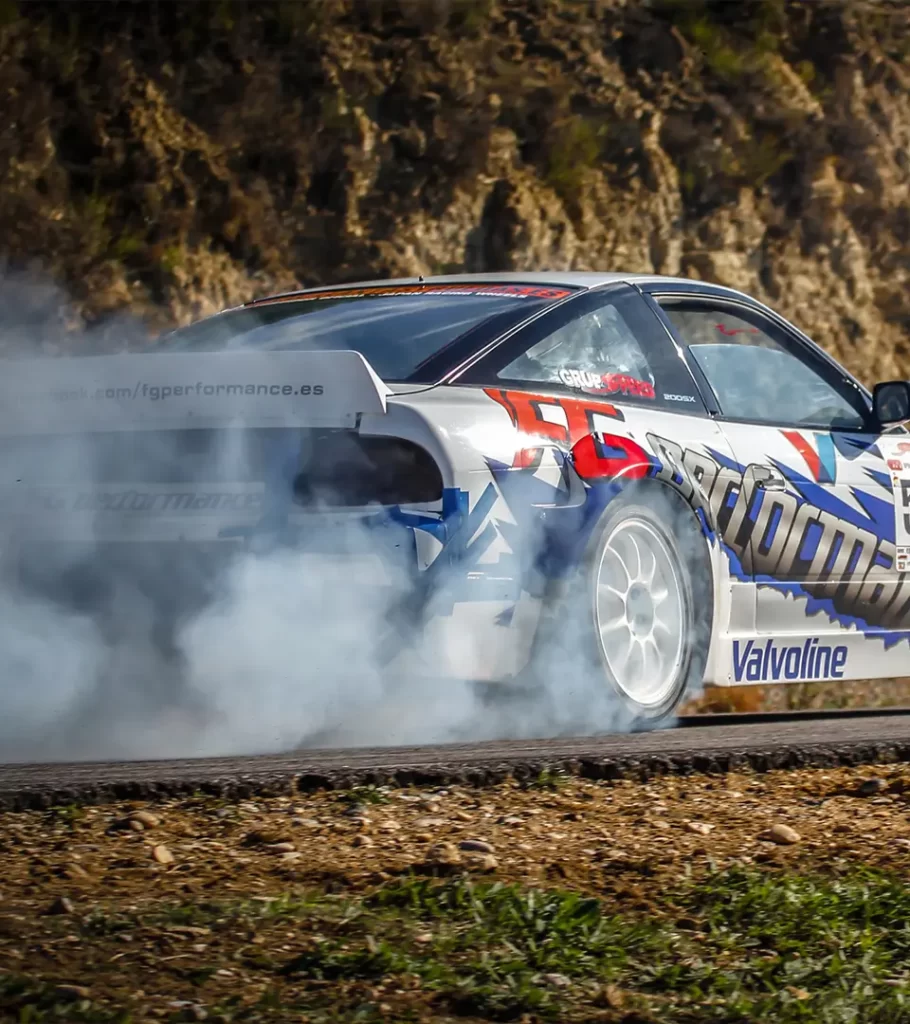The Need for Speed:
Advanced Techniques for Track-day Racing
There’s nothing quite like the thrill of automobile racing. The adrenaline rush, the speed, the skill, the competition. It’s a sport that challenges you to push your limits and test your abilities. Whether you’re a professional racer or a hobbyist, you know that driving fast is not just about stepping on the gas and talking about “family” like a certain bald-headed man in a Dodge Charger. It’s an art that requires strategy, technique, and finesse. And in this article, we’ll share some tips on how to improve your competitive driving skills and become a better racing driver. (Side note: This works for simulated racing too!)
“Auto racing began 5 minutes after the second car was built.”
– Henry Ford
Slow-in, Fast-out
A concept that applies to nearly every motorsport that exists, the slow-in fast-out technique is one of the best ways to approach a corner. It may be tempting to stamp on the pedal as fast as you can and brake as late as possible (which sometimes does work out incredibly well), but in general it’s better to smoothly slow down when moving towards a corner, feathering the throttle lightly as you turn, and hitting the gas gradually as you exit. Be patient and methodical when taking the turn, and you’ll soon find that you’re shaving several tenths or even a whole second as you come out a corner!
“It is better to go into a corner slow and come out fast, than to go in fast and come out dead.”
- Sir Stirling Moss, 1955 Champion of the Mille Miglia 1000-mile race
It’s also a way to avoid tyre lockups. Braking hard may stop your wheels from spinning, but the car is still carrying momentum which drags the tyres along the road, which not only damages the rubber on your tyres (leading to patches on the affected surface) but also restricts your ability to turn. Instead of taking the turn, your car will understeer and plough straight ahead, ala Lewis Hamilton in the last few laps of the Baku GP in 2021.


Sudden braking for fun, gradual braking for lap times
Your brake pedal isn’t an on-off switch, it’s something that you can precisely control depending on the pressure you apply to it. So the question is, should you brake with as much force as you can, or gradually slow down without ever letting the pedal hit the floor? The answer is yes.
"I had oversteer in a corner. I made one correction, then another one, then I ran out of talent."
- Martin Brundle, Former Formula 1 racing driver
Each method achieves different results, and it all depends on what you’re looking for on a track day session. If you want to just have fun, then sudden braking followed by a turn can lead to oversteer. As you brake, the weight of the car shifts to the front, causing the rear tyres to lose grip. This paired with turning will let you swing your car’s tail out as you slide through a corner. And, provided you have good throttle control and a suitable car, you can maintain that initial kick of oversteer through a corner and initiate a drift! Otherwise, if you’re looking for a solid lap time, then losing grip is the last thing you’d want, so brake early and gradually to ensure you still maintain traction throughout a turn.
“The smell of fuel, driving on the limit on the edge of sliding, it just gives you a lot of adrenaline”
– Max Verstappen, 2-time F1 World Champion

Knowing your drivetrain
FWD, RWD, AWD, what are these? These are drivetrain types that show where power from the engine (or motor) is being sent to. Front-wheel drive (FWD) is a common drivetrain type that can be found in many small hatchback, MPVs, and even some SUVs. They take the rotational energy provided by the engine and send it through the front wheels to move the car. From understanding this, I’m sure it’s easy for most to deduce that RWD and AWD talk about cars that send their power to the rear and all four wheels respectively.
But what does knowing any of this have anything to do with track day driving? Well, when pushed to the limit, these drivetrain types affect how your car behaves through a corner. FWD cars tend to understeer, where you turn the wheel but the car doesn’t point the nose of the car to where you want. Instead, it turns less sharply than you expect it too. RWD cars have the opposite problem of oversteer, where the rear of the car steps, pointing the nose too deeply into corner, sometimes leading to spinning. AWD tend to understeer just like FWD cars, but because of their improved traction they’re able to carry more speed through a corner.
Learning the racing line
The quickest way around the track isn’t always the shortest distance, but rather about maximizing your average speed across the duration of a single lap with the skills mentioned previously. The easiest example would be when it comes to cornering. Technically, the shortest distance would be to hug the inside line of the turn. However, doing so requires you to slow down your car a lot as the turn is sharper and therefore you have to compensate for the car’s limited grip. The better way to go about the corner is to start from the outside of the corner just prior to reaching it, then moving the nose towards the inside, then hitting the throttle as you exit the corner. Minimise the time you spend turning and maximise throttle time. It’s hard to visualize through words, so do have a look at the handy little image we have here!


Throttle Control
If you notice you’re spinning your wheels a lot and losing grip, then you may need to learn a little bit about throttle control. Just like brakes, simply slamming the pedal to the floor isn’t gonna cut it, as you need to gradually build up speed in order to maintain traction. In the event that you slip up and slide the tail out mid-corner, knowing what kind of car you have can help inform you on what you should do next.
With RWD cars, it’s best to ease of the throttle and just adjust your steering wheel to regain control, while hitting the throttle (in a controlled manner) to straighten the car out is a more suited solution for FWD cars.
Good throttle control is both a preventative act as well as a remedy for loss of traction, and it’s worth practicing on at low speeds for you to get a feel of how to manage your car’s behavior, increasing the speed each time to ensure you get a full grasp of the limits of your car.
"You win a race, the next race it's a question mark. Are you still the best or not? That's what is funny. But that's what is interesting. And that's what is challenging. You have to prove yourself every time."
- Michael Schumacher, 7-time Formula 1 World Champion
The Need for Speed: Advanced Techniques for Track-day Racing
There’s nothing quite like the thrill of automobile racing. The adrenaline rush, the speed, the skill, the competition. It’s a sport that challenges you to push your limits and test your abilities.
Whether you’re a professional racer or a hobbyist, you know that driving fast is not just about stepping on the gas and talking about “family” like a certain bald-headed man in a Dodge Charger. It’s an art that requires strategy, technique, and finesse. And in this article, we’ll share some tips on how to improve your competitive driving skills and become a better racing driver.
(Side note: This works for simulated racing too!)
“Auto racing began 5 minutes after the second car was built.”
– Henry Ford

Slow-in, Fast-out
A concept that applies to nearly every motorsport that exists, the slow-in fast-out technique is one of the best ways to approach a corner. It may be tempting to stamp on the pedal as fast as you can and brake as late as possible (which sometimes does work out incredibly well), but in general it’s better to smoothly slow down when moving towards a corner, feathering the throttle lightly as you turn, and hitting the gas gradually as you exit. Be patient and methodical when taking the turn, and you’ll soon find that you’re shaving several tenths or even a whole second as you come out a corner!
“It is better to go into a corner slow and come out fast, than to go in fast and come out dead.” - Sir Stirling Moss, 1955 Champion of the Mille Miglia 1000-mile race
It’s also a way to avoid tyre lockups. Braking hard may stop your wheels from spinning, but the car is still carrying momentum which drags the tyres along the road, which not only damages the rubber on your tyres (leading to patches on the affected surface) but also restricts your ability to turn. Instead of taking the turn, your car will understeer and plough straight ahead, ala Lewis Hamilton in the last few laps of the Baku GP in 2021. (Though to be fair, that’s less his fault and more on how the brake setting buttons were placed awkwardly on the steering wheel)

Sudden braking for fun, gradual braking for lap times
Your brake pedal isn’t an on-off switch, it’s something that you can precisely control depending on the pressure you apply to it. So the question is, should you brake with as much force as you can, or gradually slow down without ever letting the pedal hit the floor? The answer is yes.
"I had oversteer in a corner. I made one correction, then another one, then I ran out of talent." - Martin Brundle, Former Formula 1 racing driver
Each method achieves different results, and it all depends on what you’re looking for on a track day session. If you want to just have fun, then sudden braking followed by a turn can lead to oversteer. As you brake, the weight of the car shifts to the front, causing the rear tyres to lose grip. This paired with turning will let you swing your car’s tail out as you slide through a corner. And, provided you have good throttle control and a suitable car, you can maintain that initial kick of oversteer through a corner and initiate a drift! Otherwise, if you’re looking for a solid lap time, then losing grip is the last thing you’d want, so brake early and gradually to ensure you still maintain traction throughout a turn.
“The smell of fuel, driving on the limit on the edge of sliding, it just gives you a lot of adrenaline”
– Max Verstappen, 2-time F1 World Champion

Knowing your drivetrain
FWD, RWD, AWD, what are these? These are drivetrain types that show where power from the engine (or motor) is being sent to. Front-wheel drive (FWD) is a common drivetrain type that can be found in many small hatchback, MPVs, and even some SUVs. They take the rotational energy provided by the engine and send it through the front wheels to move the car. From understanding this, I’m sure it’s easy for most to deduce that RWD and AWD talk about cars that send their power to the rear and all four wheels respectively.
But what does knowing any of this have anything to do with track day driving? Well, when pushed to the limit, these drivetrain types affect how your car behaves through a corner. FWD cars tend to understeer, where you turn the wheel but the car doesn’t point the nose of the car to where you want. Instead, it turns less sharply than you expect it too. RWD cars have the opposite problem of oversteer, where the rear of the car steps, pointing the nose too deeply into corner, sometimes leading to spinning. AWD tend to understeer just like FWD cars, but because of their improved traction they’re able to carry more speed through a corner.

Learning the racing line
The quickest way around the track isn’t always the shortest distance, but rather about maximizing your average speed across the duration of a single lap with the skills mentioned previously. The easiest example would be when it comes to cornering. Technically, the shortest distance would be to hug the inside line of the turn. However, doing so requires you to slow down your car a lot as the turn is sharper and therefore you have to compensate for the car’s limited grip. The better way to go about the corner is to start from the outside of the corner just prior to reaching it, then moving the nose towards the inside, then hitting the throttle as you exit the corner. Minimise the time you spend turning and maximise throttle time. It’s hard to visualize through words, so do have a look at the handy little image we have here!

Throttle control
If you notice you’re spinning your wheels a lot and losing grip, then you may need to learn a little bit about throttle control. Just like brakes, simply slamming the pedal to the floor isn’t gonna cut it, as you need to gradually build up speed in order to maintain traction. In the event that you slip up and slide the tail out mid-corner, knowing what kind of car you have can help inform you on what you should do next.
With RWD cars, it’s best to ease of the throttle and just adjust your steering wheel to regain control, while hitting the throttle (in a controlled manner) to straighten the car out is a more suited solution for FWD cars.
Good throttle control is both a preventative act as well as a remedy for loss of traction, and it’s worth practicing on at low speeds for you to get a feel of how to manage your car’s behavior, increasing the speed each time to ensure you get a full grasp of the limits of your car.